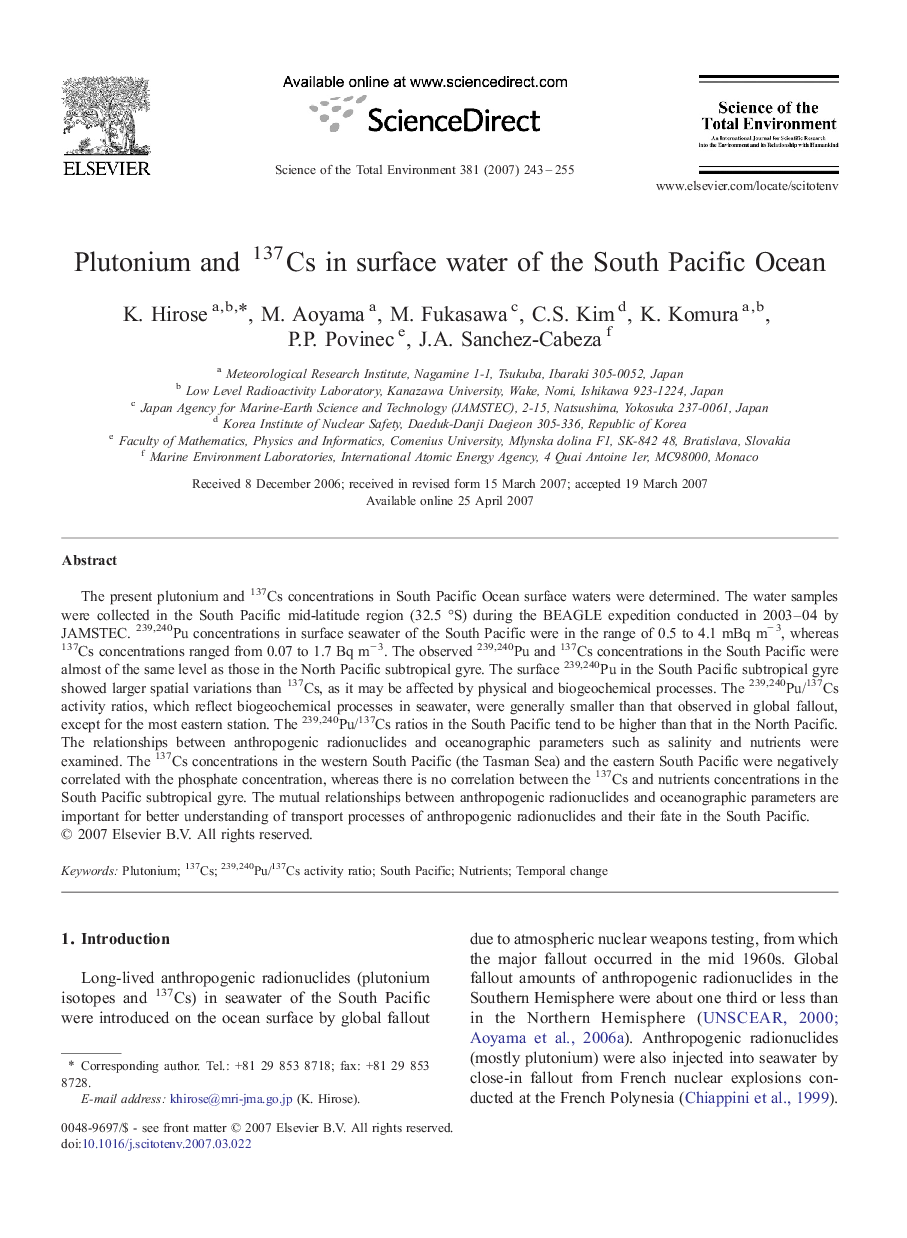| Article ID | Journal | Published Year | Pages | File Type |
|---|---|---|---|---|
| 4433173 | Science of The Total Environment | 2007 | 13 Pages |
The present plutonium and 137Cs concentrations in South Pacific Ocean surface waters were determined. The water samples were collected in the South Pacific mid-latitude region (32.5 °S) during the BEAGLE expedition conducted in 2003–04 by JAMSTEC. 239,240Pu concentrations in surface seawater of the South Pacific were in the range of 0.5 to 4.1 mBq m− 3, whereas 137Cs concentrations ranged from 0.07 to 1.7 Bq m− 3. The observed 239,240Pu and 137Cs concentrations in the South Pacific were almost of the same level as those in the North Pacific subtropical gyre. The surface 239,240Pu in the South Pacific subtropical gyre showed larger spatial variations than 137Cs, as it may be affected by physical and biogeochemical processes. The 239,240Pu/137Cs activity ratios, which reflect biogeochemical processes in seawater, were generally smaller than that observed in global fallout, except for the most eastern station. The 239,240Pu/137Cs ratios in the South Pacific tend to be higher than that in the North Pacific. The relationships between anthropogenic radionuclides and oceanographic parameters such as salinity and nutrients were examined. The 137Cs concentrations in the western South Pacific (the Tasman Sea) and the eastern South Pacific were negatively correlated with the phosphate concentration, whereas there is no correlation between the 137Cs and nutrients concentrations in the South Pacific subtropical gyre. The mutual relationships between anthropogenic radionuclides and oceanographic parameters are important for better understanding of transport processes of anthropogenic radionuclides and their fate in the South Pacific.
